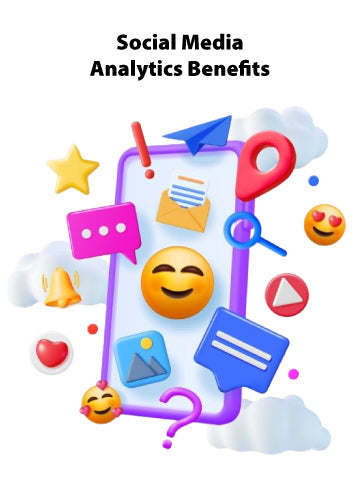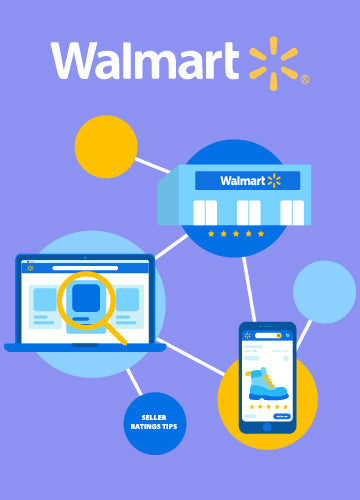Highlights
- Brand marketing promotes the entire company by showcasing its style, values, and story, not just its products or services.
- Consistent branding can lead to up to 20% more overall growth and 33% higher revenue than inconsistent branding.
- Branding defines who your business is, while marketing builds awareness and drives sales.
- Companies incorporating content marketing see 3X more leads than those relying solely on paid search.
Brand Marketing: More Than Just a Buzzword!
Brand and marketing are two words used countless times by entrepreneurs and marketers. However, there’s a lot more to brand marketing than meets the eye.
So, in this article, we'll explore some of the best examples of brand marketing from leading global brands. Additionally, we'll cover how to build an effective strategy for your business success.
What Is Brand Marketing?

Brand marketing promotes the whole company, not just its products or services. This means showing off the company’s style, sharing its values, and telling a great brand story.
Brand marketing helps in many ways. It can boost your brand’s reputation, build brand equity, and make consumers trust and stay loyal to you.
Businesses with consistent branding see up to 20% more overall growth and enjoy 33% higher revenue than those with inconsistent or off-brand content.
Brand Marketing Example
For Example: Nike's "Just Do It" Campaign
Nike has spent $300 million advertising its "Just Do It" campaign, a classic example of effective brand marketing.
The slogan "Just Do It" encourages people to push their limits and embrace their inner athletes. This approach not only highlights the brand's commitment to performance and innovation but also creates a strong emotional connection with consumers.
What’s The Difference Between Branding And Marketing, And Which Comes First?
Understanding the difference between branding and marketing helps you use them effectively.
Simply, marketing builds awareness of your brand and products to generate sales. Branding shows who your business is and what it's about.
Think of marketing as your toolkit to generate business and branding as the overall approach to reach your target audience. Branding is key to your marketing strategy, so it comes first.
“For example, if your brand was KFC, the branding would be the "secret sauces and spices." The marketing would be TV, radio, billboards, and social media ads that excite customers to try your chicken.”
Once you define your brand's look, organize it in a guide. This guide should include your company’s personality, logo, typography, and colors to reflect your brand’s values.
“For example, a bold brand might use bright colors and a lively tone, while a traditional brand might use muted colors and a sophisticated font.”
What are the 7Ps of the Marketing Model?

Before making your branding marketing strategy, it’s essential to understand the basics of the marketing 7 Ps model:
1. Product
The Products are the goods or services offered by a business. This includes the product's design, quality, features, and packaging. To market successfully, businesses must understand their target market and ensure their products fulfill customer demands.
Key Insight: According to the Content Marketing Institute, 73% of B2B and 70% of B2C marketers incorporate content marketing into their strategies to enhance product visibility and appeal.
2. Price
Setting a competitive and profitable price is crucial. Pricing strategies such as discounts, bundling, and dynamic pricing can influence consumer behavior and purchase decisions.
3. Place
Place is the distribution channel that makes the product accessible to customers. This can include physical stores, online platforms, or both. The goal is to ensure that products are available where and when customers want them.
4. Promotion
Promotion includes the strategies used to communicate and attract customers to the product. This includes advertising, public relations, sales promotions, and other marketing channels. According to a HubSpot report, content marketing gets 3X more leads than paid search advertising.
5. People
People include employees, customers, and other stakeholders who interact with the business. Creating positive experiences for these individuals, such as through excellent customer service, is crucial for maintaining satisfaction and loyalty.
Qualtrics and ServiceNow found that 80% of customers switch brands due to poor service.
6. Process
Process involves the procedures and steps required to deliver a product or service to the customer. Streamlining processes can enhance efficiency and customer satisfaction. Salesforce found that 80% of customers value the overall experience as much as the product.
7. Physical Evidence
Physical Evidence refers to the tangible elements associated with the product, such as packaging and branding, that help shape customer perceptions and differentiate the business from competitors. The National Retail Federation says 72% of consumers prefer shopping at stores with a positive physical environment.
How to Build an Effective Brand Marketing Strategy?

Creating and executing a brand marketing strategy involves 5 key steps to ensure your brand resonates with your target audience and stands out:
1. Research Your Target Market
Understanding your target audience is fundamental to elevate brand marketing. To tailor your branding strategy to meet your audience's needs and preferences, consider these methods:
- Surveys and Interviews: Collect feedback from diverse groups to uncover insights about your potential customers beyond your assumed target persona.
- Field Research: Observe and interact with your audience in their natural environment. For instance, if you sell pet products, visit dog parks to see what toys owners and dogs prefer.
- Review Existing Data: Analyze customer data from previous sales to identify trends such as demographics and geographic locations.
2. Study Your Competitors
Analyzing competitors helps you identify opportunities for differentiation and understand how they appeal to the same audience:
- Website and Newsletter Analysis: Examine their websites and subscribe to their newsletters for insights into their messaging and promotions.
- Social Media Monitoring: Follow their social media accounts to observe their engagement strategies and brand voice.
- Ad Analysis: Use tools like Facebook Ads Library to review their advertising strategies.
- Customer Feedback: Review reviews and feedback on platforms like YouTube, G2, and Trustpilot.
3. Develop Brand Guidelines
Create comprehensive brand guidelines to ensure uniformity across all marketing materials:
- Voice and Tone: Define your brand's communication, language style, and key messaging.
- Design Elements: Include details on your brand colors, fonts, and logo usage.
4. Invest in Content Marketing
Content marketing is useful for conveying your brand's story and engaging with your audience:
- Create High-Quality Content: Develop content that reflects your brand’s voice and resonates with your audience. This could be blog posts, videos, infographics, etc.
- Manage Content Production: Decide whether to handle content creation internally or outsource it. As your brand grows, hiring a dedicated content marketer can help ensure your content strategy aligns with your overall brand goals.
You can also opt for a brand marketing agency like Swifstart to promote your brand and boost audience engagement through storytelling and valuable information.
5. Track How Consumers Are Responding
Monitoring consumer feedback helps you gauge the effectiveness of your marketing strategy and make required adjustments:
- Social Media Monitoring: Use tools like TweetDeck and Google Alerts to track references of your brand and industry-related keywords.
- Analyze Feedback: Respond to direct interactions and unsolicited mentions to understand public perception and sentiment.
Summary
Brand marketing is essential for building a prominent company identity. Businesses can significantly boost growth and revenue by focusing on consistent branding, investing in content marketing, and understanding your target audience and competitors. Moreover, prioritizing branding for your marketing strategy can lead to measurable improvements in engagement, reputation, and overall success.
Want to boost your online business? Sign up for Consumr.co free newsletter! We share tips and tricks to help you be the best in e-commerce. Get the latest trends and easy guides straight to your inbox. Just enter your email and hit subscribe—start learning how to grow your business today!
FAQs
What Is Brand Marketing?
Brand marketing promotes a company's brand as a whole rather than just its products or services. It focuses on building a strong brand and encouraging customer loyalty through consistent messaging and strategic marketing activities.
What Is Branding In Marketing?
Branding in marketing involves creating a unique name, design, and identity for a product or company that distinguishes it from competitors.


